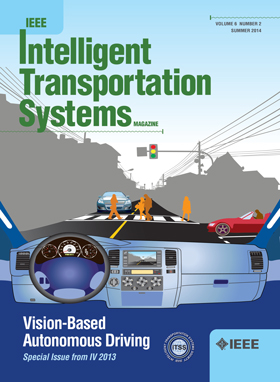DBKE:基于ECC的区块链车对车安全密钥管理协议设计
IF 8.4
1区 工程技术
Q1 ENGINEERING, CIVIL
IEEE Transactions on Intelligent Transportation Systems
Pub Date : 2025-06-04
DOI:10.1109/TITS.2025.3572305
引用次数: 0
摘要
车辆对车辆(V2V)认证在车辆自组织网络(VANET)中至关重要。V2V通信提高了驾驶员的安全性,并帮助他们根据路况做出适当的决定。由于V2V通信发生在开放的公共通道中,攻击者利用它并试图发起几个潜在的威胁。本文设计了一个区块链辅助的V2V通信和认证方案,使用椭圆曲线加密(ECC)和称为DBKE的物理不可克隆函数(PUF)。在DBKE系统中,车辆无需借助集中式云服务器,即可向最近的路边单位(RSU)进行注册。然后,一辆车可以使用存储在区块链中的信息与另一辆车通信。在通信过程中,双方首先执行相互认证过程,然后安全地生成会话密钥,而不将私有参数发送到公共通道。DBKE的形式化分析是用Scyther和Real-or-Random (ROR)模型完成的,这证实了DBKE的鲁棒性和免受攻击的安全性。此外,通过对安全特性的详细对比研究,DBKE方案与现有的V2V认证协议相比,具有更高的安全性和更低的计算成本。本文章由计算机程序翻译,如有差异,请以英文原文为准。
DBKE: Design of Blockchain-Envisioned Vehicle-to-Vehicle Secure Key Management Protocol Using ECC
Vehicle-to-vehicle (V2V) authentication is essential in the Vehicular Ad-hoc Network (VANET). V2V communication improves the safety of drivers and assists them in making the appropriate decision according to road conditions. Since V2V communication happens in open public channels, an adversary takes advantage of it and tries to launch several potential threats. This article designs a blockchain-assisted V2V communication and authentication scheme using Elliptic Curve Cryptography (ECC) and a Physically Unclonable Function (PUF) called DBKE. In DBKE, vehicles perform their registration with their nearest Roadside Unit (RSU) without assisting the centralized cloud server. Then, one vehicle can communicate with another using the information stored in the blockchain. During the communication, both vehicles first perform the process of mutual authentication and then securely generate the session keys without sending the private parameters to the public channels. The formal analysis of DBKE is done with the Scyther and Real-or-Random (ROR) models, which confirm that the DBKE is robust and safe from attacks. Furthermore, the detailed comparative study of the security features reveals that the DBKE scheme provides superior security and low computation cost compared to the existing V2V authentication protocols.
求助全文
通过发布文献求助,成功后即可免费获取论文全文。
去求助
来源期刊

IEEE Transactions on Intelligent Transportation Systems
工程技术-工程:电子与电气
CiteScore
14.80
自引率
12.90%
发文量
1872
审稿时长
7.5 months
期刊介绍:
The theoretical, experimental and operational aspects of electrical and electronics engineering and information technologies as applied to Intelligent Transportation Systems (ITS). Intelligent Transportation Systems are defined as those systems utilizing synergistic technologies and systems engineering concepts to develop and improve transportation systems of all kinds. The scope of this interdisciplinary activity includes the promotion, consolidation and coordination of ITS technical activities among IEEE entities, and providing a focus for cooperative activities, both internally and externally.
 求助内容:
求助内容: 应助结果提醒方式:
应助结果提醒方式:


